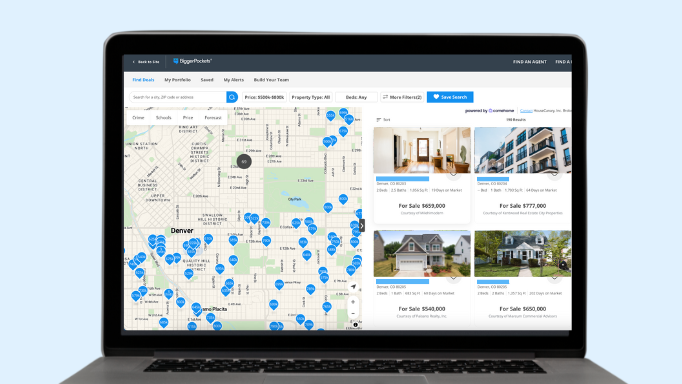[ad_1]
Proposition 33—a measure on this year’s California election ballot that would increase rent control laws by limiting the amount landlords can charge for rent, regardless of an apartment’s rental history, and expanding them to single-family homes—is viewed as pivotal by its advocates and opponents in the fight for housing affordability.
Nowhere is homelessness and affordability more of a key issue than in California. Recent data shows that nearly 186,000 people now live on the streets and homeless shelters in the state.
And it’s not just in California: In 2022, according to a Harvard study, more than 50% of tenant households in the U.S. paid more than 30% of their income on rent and utilities, making them cost-burdened, and a quarter spent half their income on housing.
Pros and Cons of Rent Control
Rent control can be an invaluable safety valve for soaring rents, giving tenants a relatively affordable place to live in pricey cities where working- and middle-class workers are sorely needed. Landlords complain, however, when rent-controlled apartments are passed on from one tenant to another within the same family, leading to generations of tenants living in rent-controlled buildings. Also, rent control can affect the landlord’s ability to keep up with costs, ultimately hurting building maintenance.
What Passing Proposition 33 Would Do
Prop 33 limits how much landlords can charge for rent, even when a rental unit has been vacated.
Currently, the Costa-Hawkins Rental Housing Act bans localities from capping rent on vacant units, single-family homes, and apartments built after Feb. 1, 1995. State law limits rent increases for tenants in apartments and corporate-owned single-family homes older than 15 years. The cap is set at 5% plus inflation, with a maximum increase of 10%. Local jurisdictions have leeway to impose stricter caps with no limits.
Currently, there is something of a gray area surrounding rent control on single-family homes and apartments built after Feb. 1, 1995. State law generally prohibits it, though it is not always enforced. The cut-off date is earlier in some areas, such as in the City of Los Angeles.
Proponents of Prop 33
The measure has many advocates and was sponsored by the AIDS Healthcare Foundation, a Los Angeles nonprofit active in housing issues in recent years that has contributed nearly $47 million in support. Labor and tenant organizations, including Unite Here Local 11 and the Coalition for Economic Survival, as well as the California Democratic Party and the ACLU of Southern California, have also endorsed the measure.
Opponents
Many in the real estate industry oppose Prop 33. The California Apartment Association—which it says has 13,000 members and has contributed nearly $66 million to oppose the measure—is organizing a campaign against it. So far, opponents, mainly investors, Realtors, and property managers, have raised over $100 million.
Why oppose Prop 33?
If rent is unaffordable, endorsing Prop 33, a measure designed to offer rental relief, surely makes sense? Opponents say the opposite—that the measure could be counterproductive.
It’s not just the real estate industry that thinks it’s a bad idea, but the editorial board of the LA Times, too. While the venerable newspaper said they support rent control and have endorsed two previous initiatives that would have repealed or amended Costa-Hawkins, they are not fans of Prop 33, as they feel it could “make California’s housing shortage even worse by prohibiting the state from imposing any limits on rent controls set by cities and counties in the future.”
As a result, they contend that anti-growth cities (NIMBYs) could leverage their authority over rent control to require that developers set extremely low rent caps on new apartment buildings, which would make new multifamily housing financially unfeasible.
Conversely, cities that want to keep rents affordable could impose “vacancy control,” which means rents stay capped even after a tenant moves out, or they could insist that new constructions are rent-controlled. Both measures could discourage developers from building affordable housing.
Other opponents fear rent control laws could cause landlords of unregulated apartments to increase rents even more because of demand. Rent control could also hurt landlords whose expenses are not controlled, causing them to forgo repairs and stop further investment in new units.
A Possible Solution
Rather than the broad strokes of Prop 33, opponents feel that amending or repealing Costa-Hawkins would allow cities more flexibility instead of a one-size-fits-all approach—with safeguards in place to prevent flexibility turning into autonomy that would affect future housing construction.
A previous initiative by Berkeley officials in 2020 considered “rolling rent control,” which would slowly expand the number of regulated units by applying rent control to properties as soon as they turned 10 or 15 years old. This would allow developers to use market rents to pay off the costs of a new building before rent control caps came into effect.
Wider Ramifications
According to the National Low Income Housing Coalition, over 300 new tenant protections have been implemented since January 2021. Many states are watching the outcome of Prop 33 with avid interest, and rent control advocates are looking to leverage a passing vote into rent control expansion nationwide.
What Prop 33 Could Mean for Investors
Generally speaking, most real estate investors do not favor rent control for obvious reasons. Taxes, insurance, repairs, and interest rates have all increased precipitously in recent years. Landlords use rents to cover these expenses, and without a comparable increase, buildings inevitably suffer.
In addition, commercial buildings are valued based on their rent roll. Limiting their value also denies developers the leverage to build or buy other housing.
However, the sheer volume of people needing housing and the city’s willingness to find them should mean that affordably priced units and homes will remain rented, adding a certain degree of stability to a notoriously unstable industry. It’s a delicate balance with no easy solutions.
Possibly the hardest-hit investors by Prop 33’s potential passing would be smaller mom-and-pop landlords, who cannot recoup the losses that rent control would bring the way larger landlords can.
“Mom-and-pop landlords typically don’t raise rents as often as corporate landlords, but rent control forces them to keep increasing rent or risk falling behind, particularly when a tenant moves out,” Alexandra Alvarado, director of marketing and education at American Apartment Owners Association, an industry group that helps landlords with tenant screening and other services, told Nevada Current.
Final Thoughts
Everyone agrees that affordable housing is sorely needed. What most people disagree on is how to achieve it. Investors are the backbone of the rental housing industry, and their ability to run their businesses effectively and efficiently helps them stay afloat and benefits the tenants they house. Equally, tenants need to be able to afford a place to live.
Finance needs to come from somewhere to bridge the gap. A Berkeley proposal, touted by landlord groups, suggests expanding rent control exemptions, directing some city revenue to property owners on tenants’ behalf, and restricting the authority of the city’s rental oversight board. It’s a middle ground and one of many possible solutions to a contentious issue without easy answers.
Find the Hottest Deals of 2024!
Uncover prime deals in today’s market with the brand new Deal Finder created just for investors like you! Snag great deals FAST with custom buy boxes, comprehensive property insights, and property projections.

Note By BiggerPockets: These are opinions written by the author and do not necessarily represent the opinions of BiggerPockets.
[ad_2]
Source link






 Bitcoin
Bitcoin  Tether
Tether  XRP
XRP  USDC
USDC  Lido Staked Ether
Lido Staked Ether  Dogecoin
Dogecoin  LEO Token
LEO Token